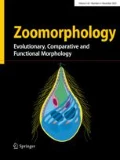Literaturverzeichnis
Bailey, J. W. The anatomy of certain plants from the Belgian Congo with spec. reference to Myrmecophytism. Bull. amer. Mus. Natur. Hist. 45 585–622 (1922).
— Notes on Neotropical Ant-Plants, I. Cecropia angulata sp. n. Bot. Gaz. 74 369–391 (1922).
— Notes on Neotropical Ant-Plants. II. Tachigalia paniculata Aubl. Bot. Gaz. 75 25–42 (1923).
— Notes on Neotropical Ant-Plants. III. Cordia nodosa Lam. Bot. Gaz. 77 32–49 (1924).
Bequaert, J. C. Ants in their diverse Relations to the Plant World. Bull. amer. Mus. Natur. Hist. 45 333–583 (1922).
— The predaceous enemies of ants. Bull. amer. Mus. Natur. Hist. 45 271 bis 332 (1922).
— Are ants better protected against the attacks of their predaceous enemies than other arthropods? Zool.Anz. 88 163–176 (1930).
Beier, W. Pseudoskorpione aus Mexiko. Zool. Anz. 104 91–101 (1933).
Blochwitz, A.: Ameisenkörperchen, Perlblasen usw. Bot. Zbl. 46, Beih. (1929).
Dannecker, E.: Über Bau und Entwicklung hohler ameisenbewohnter Orchideenknollen nebst Beitrag zur Anatomie der Orchideen. Diss. 1898.
Doeters v. Leuwen, W.: Ameisen-Epiphyten aus Java. Ber. Dtsch. bot. Ges. 47 (1929).
Zusammenleben von Camp. quadriceps mit dem Ameisenbaum Endospermum, De Treubia, Ed. 10. (1929).
Eidmann, H. Die Ameisenfauna der Balearen. Z. Morph. u. Ökol. Tiere 6 694–772 (1926).
Emden, Fr. van Die Larven von Discoloma cassidum Reitt. (Col.) und Skwarraia Paradoxa Lac. (Col. Chrysom.). Zool. Anz. 101 1–17 (1932).
Forel, A. Fourmis mexicaines récoltées par M. le prof. W. M. Wheeler à propos de la classification des Fourmis. Ann. Soc. entomol. Belg. 45 123–141 (1901).
Le Monde social des Fourmis. Genf 1922.
Friederichs, K. Gedanken zur Biocönologie, insbesondere über die soziale Frage im Tierreich. Sitzgsber. Abh. naturforsch. Ges. Rostock, III. F. 2 1–11 (1927/28).
Die Grundfragen und Gesetzmäßigkeiten der land- und forstwirtschaftlichen Zoologie, insbesondere der Entomologie, Bd. 1, ökol. Teil. Berlin 1930.
Handschin, E.: Die Succession der Tierverbände als Grundlage 6kologischer und zoogeographischer Forschung. Schweiz. entomol. Anz. 1923, 1–4.
Harms, H.: Bromeliaceae in „Die natürlichen Pflanzenfamilien nebst ihren Gattungen und wichtigeren Arten, insbesondere der Nutzpflanzen, 2. Aufl., Bd. 15a, S. 65–159. 1930.
Hesse, R.: Tiergeographie auf ökologischer Grundlage. Jena 1924.
Krogerus, R. Über die Ökologie und Verbreitung der Arthropoden der Triebsandgebiete an den Küsten Finnlands. Acta zool. fenn. 12 308 (1932).
Liebke, M.: Laufkäfer-Studien, X. Entomol. Anz. 1932, 147–195.
Luederwaldt, H. Observaçoes biologicas sobre Formigas brasileiras. Rev. Mus. Paulista 14 187–304 (1926).
Mann, W. M. Parabiose in Brazilian ants. Psyche (Lond.) 19 36–41 (1912).
Mez, C.: Bromeliaceae. Paris 1896.
Miehe, H.: Ameisenpflanzen, Handwörterbuch der Naturwissenschaften, 2. Auf I., Bd. 1, S. 221 bis 230. Jena 1931.
Moewes, F. Die Cisternen der Bromeliacean. Naturwiss. 2 436–439 (1914).
Norton, E.: Description of Mex. Ants noticed. Amer. Naturalist, April 1868, Proc. Essec. Inst.
Paoli, G. Strane Abitazioni di una Formica su Acacie della Samolia. Riv. Col. Ital. 3 1–14 (1929).
— Contributo allo Studio dei Rapporti fra la Acacie e le Formiche. Mem. Soc. entomol. ital. 9 195 (1930).
Priesner, H. Neue exotische Thysanopteren, Stylops. J. Tax. Entomol. 2 145–156 (1933).
Purpus, A. Schomburgkia tibicinis Batem., eine hochinteressante Ameisenorchidee. Möllers Dtsch. Gärtnerztg 1912 40, 470–472.
Purpus, C. A. Meine botanische Sammel- und Forschungsreise in Mexiko vom Frühjahr bis Herbst 1912. Möllers Dtsch. Gärtnerztg 1914 7, 25, 30, 45, 50, 51.
Reichwein, A.: Mexiko erwacht. Leipzig 1930.
Roepke, W. Über einen merkwürdigen Fall von „Myrmekophilie” bei einer Ameise (Cladomyrma sp. ?) auf Sumatra. Micr. Sumatrana Bd. 45, S. 1–3, 1930.
Roewer, F. Drei neue Cosmetiden (Opilioniden) aus Mexiko. Zool. Anz. 95 247–250 (1931).
— Araneen aus mexikanischen Ameisenpflanzen. Zool. Anz. 102 183–188 (1933).
Sartorius, C.: Mexiko und die Mexikaner. Darmstadt 1852.
Sellniek, M.: Mexikanische Milben. Manuskript im Druck.
Skwarra., E.: Ameisen und Ameisenpflanzen im Staate Veracruz. 4. Wanderslg dtsch. Entomol. Kiel 1930, S. 160–170.
Ökologische Studien über Ameisen und Ameisenpflanzen in Mexiko. Königsberg 1934.
Snethlage, E. H. Neue Arten der Gattung Cecropia nebst Beiträgen ihrer Synonymik. Notizbl. Bot. Gart. Mus. Berlin-Dahlem 8 357–369 (1923).
Standley, B. C.: Trees and Shrubs of Mexico. Washington 1920/26.
Thienemann, A.: Lebensraum und Lebensgemeinschaft. Naturwiss. Wschr. N. F. 17 (1918).
Aus der Heimat. Naturwiss. Mschr. 41 (1928).
— Biologische Forschungsreisen und das System der Biologie. Zool. Anz. 73 245–253 (1927).
Wheeler, W. M. Microdon-Larve in Pseudomyrma-Nests. Psyche (Boston) 9 222–224 (1901).
— Pseudoscorpione in ant nests. Psyche (Boston) 18 166–168 (1911).
— Three new ants from Mexiko and Central America. Psyche (Boston) 18 203–208 (1901).
— A Study of some ant larvae, with a consideration of the origin and meaning of the social habit among insects. Proc. amer. philos. Soc. 57 293–343 (1918).
A Study of some social beetles in Br. Guiana and their relations to the ant-plant Tachigalia etc. Zoologica 3 (1921).
Social Life among the Insects. London 1922.
Two interesting neotr. Myrmecophytes (Cordia nodosa and C. alliodora). 4. internat. Congr. Entomol., S. 342–353. 1928.
— Neotropical ants of the genus Xenomyrmex Forel. Rev. Entomol. 1 129–139 (1931).
— The ant. Camp. (Myrm.) sericeiventris Guér. and its mimic. Psyche (Boston) 38 86 bis 98 (1931).
— New and little known ants of the Genera Macromischa, Croesomyrmex and Antillaemyrmex. Bull. Mus. comp. Zool. 72 1–34 (1931).
Neotropical ants collected by Dr. Elisabeth Skwarra and others. Bull. Mus. comp. Zool. 1934 (im Druck).
Wheeler, W. M. and I. C. Bequaert: Amazonian Myrmecophytes and their ants. Zool. Anz. 1929, 10–39 (Wasmann-Festband).
Wheeler, W. M. and P. I. Darlingtion jr. Ant-tree notes from Rio Frio, Columbia.Psyche (Boston) 37 107–117 (1930).
Wheeler, W. M. and W. M. Mann u. a.: Some Cordia and Triplaris insects. Psyche (Lond.) 35 167–172 (1928).
Author information
Authors and Affiliations
Rights and permissions
About this article
Cite this article
Skwarra, E. Ökologie der lebensgemeinschaften mexikanischer ameisenpflanzen. Z. f. Morphol. u. Ökol. d. Tiere 29, 306–373 (1934). https://doi.org/10.1007/BF00407917
Received:
Issue Date:
DOI: https://doi.org/10.1007/BF00407917

